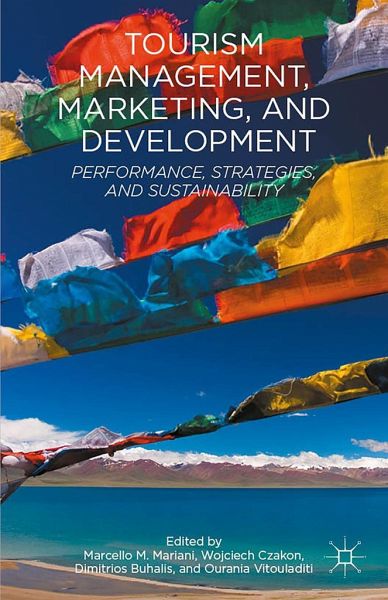
Tourism Management, Marketing, and Development
Performance, Strategies, and Sustainability
Herausgegeben: Mariani, Marcello M.; Buhalis, Dimitrios; Czakon, Wojciech; Vitouladiti, Ourania
Versandkostenfrei!
Versandfertig in 6-10 Tagen
106,99 €
inkl. MwSt.

PAYBACK Punkte
53 °P sammeln!
Companies and destinations in the tourism sector are confronted with increasing managerial challenges and have to deal with a competitive, turbulent, and fast-changing environment. The understanding that both tourism companies and destinations endowed with the best assets (natural and cultural) cannot survive the escalating international competition without good managerial practices, has provided significant momentum for the development of the disciplinary field of tourism management in the last three decades.This volume recognizes the relevance of travel, tourism, and tourism activities as ma...
Companies and destinations in the tourism sector are confronted with increasing managerial challenges and have to deal with a competitive, turbulent, and fast-changing environment. The understanding that both tourism companies and destinations endowed with the best assets (natural and cultural) cannot survive the escalating international competition without good managerial practices, has provided significant momentum for the development of the disciplinary field of tourism management in the last three decades.
This volume recognizes the relevance of travel, tourism, and tourism activities as major economic drivers in the contemporary global economy, with a specific focus on performance, strategies, and sustainability. It is the collective intellectual effort of a number of international scholars, who cultivate original research on tourism management from a variety of theoretical perspectives. Together, they outline the importance for tourism companies and destinations to achieve and maintain a sustained competitive advantage by embracing sustainability and a Triple Bottom Line (TBL) approach to performance.
This volume recognizes the relevance of travel, tourism, and tourism activities as major economic drivers in the contemporary global economy, with a specific focus on performance, strategies, and sustainability. It is the collective intellectual effort of a number of international scholars, who cultivate original research on tourism management from a variety of theoretical perspectives. Together, they outline the importance for tourism companies and destinations to achieve and maintain a sustained competitive advantage by embracing sustainability and a Triple Bottom Line (TBL) approach to performance.












